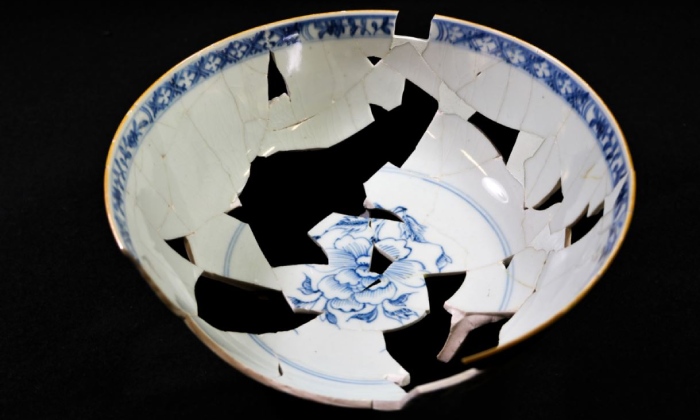Fortress of Louisbourg National Historic Site

© Parks Canada
The Fortress of Louisbourg was designated a national historic site in 1920.
Commemorative plaque: 58 Wolfe Street, Louisbourg, Nova ScotiaFootnote 1
Fortress of Louisbourg
In 1713, France decided to found Louisbourg to defend her colonial and maritime interests in North America. As capital of the colony of Isle Royale and guardian the Gulf of Saint. Lawrence, it became the most important French fishing and commercial center in North America. The fortress was besieged and captured by British forces in 1745 and again in 1758. Its fortifications were demolished in 1760. In 1928, Louisbourg was designated a National Historic Site. Its reconstruction was begun in 1961 so that future generations seeing it might understand the role of the Fortress in our history.

© Parks Canada

© Parks Canada
Description of historic place
Fortress of Louisbourg is the largest reconstructed 18th-century French fortified town in North America, located on the southeast edge of Louisbourg Harbour adjacent to the Atlantic Ocean in southeastern Cape Breton, Nova Scotia. It is composed of the site of the original fortress as well as associated outlying lands and islands, and contains rare remnants of 18th-century French and British life in North America. Part of the fortress and town of Louisbourg has been reconstructed to assist visitors in understanding its scale, complexity and dimension. The designation refers to original surviving 18th-century elements of the landscape and built resources.
Heritage value
Fortress of Louisbourg was designated a national historic site of Canada because:
- between 1713 and 1768 it was a place of profound significance in the great France-British struggle for empire.
The Fortress of Louisbourg was established by France as a critical fishing, trans-shipment and supply port for its maritime empire. As administrative capital of the French colonies of Ile Royale including Ile-St-Jean, it was home to the local government, an established military garrison and civilian population. It was also an important mercantile centre for French ships trading around the world and for development of a North American trading empire based on the fishery. As such, Louisbourg was a fortified town. It was a strategic base for protection of the lucrative French fishery and off-shore trade as well as guarding approaches to the Gulf of St. Lawrence, the main shipping route to Quebec and the North American interior. As a critical French asset, Louisbourg was a point of contention between French and British governments. It was besieged and captured by the British in 1745 and 1758. The British systematically demolished its fortifications in 1760-1768 and abandoned the town by the mid-1780s. Parks Canada has reconstructed approximately a quarter of the walled townsite (1961-81).
The heritage value of the Fortress of Louisbourg lies in its historical associations as illustrated by the surviving remnants of the 18th-century cultural landscape and the massive archaeological collection.
Sources: Historic Sites and Monuments Board of Canada, Minutes, 1920; Commemorative Integrity Statement, March 1997.
-
69 thousand fragments of porcelain from Jingdezhen in the archaeological collections at the Fortress of Louisbourg National Historic Site
Chinese porcelain was uncovered by archaeologists at the Fortress of Louisbourg National Historic Site.
The City of Jingdezhen sits on the banks of the Chang River in the southern Chinese province of Jiangxi. For over a thousand years, it has been a centre for the production of fine porcelain wares. In 1679, the city’s ceramic artists began producing distinctive blue-and-white wares for export to the markets in Europe and southeast Asia.
The fine craftsmanship and beautiful decoration of these Chinese porcelains led to an explosion of demand for the wares in markets around the world, including 18th-century Louisbourg. The archaeological collections at Louisbourg contain over 69 thousand fragments of porcelain from Jingdezhen, a testament to their popularity.

Some of the 69 thousand fragments of porcelain from Jingdezhen in the archaeological collections at the Fortress of Louisbourg National Historic Site, date unknown
© Parks Canada
Reproduction of Chinese porcelain by Jingdezhen potters, date unknown
© Parks CanadaIn 1997, the Fortress of Louisbourg commissioned potters in Jingdezhen to reproduce ten examples of Chinese export porcelain selected from the site’s archaeological collection. Working with Louisbourg archaeologists, the renowned Chinese ceramicist Jiansheng Li established a team of artists to produce hand-crafted reproduction porcelain. These pieces bring to life the taste and refinement of 18th-century Louisbourg and celebrate Jingdezhen’s important place in ceramic history.

Fragments of porcelain from Jingdezhen at the Fortress of Louisbourg National Historic Site, date unknown
© Parks Canada
Chinese porcelain reproduction, date unknown
© Parks Canada

© Parks Canada
The National Program of Historical Commemoration relies on the participation of Canadians in the identification of places, events and persons of national historic significance. Any member of the public can nominate a topic for consideration by the Historic Sites and Monuments Board of Canada.
- Date modified :



